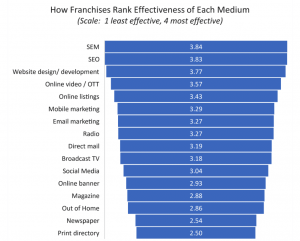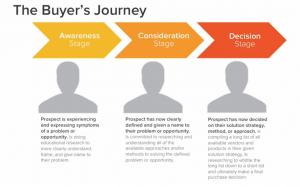
Growing website traffic is a constant struggle for online marketers and SEO specialists. In most cases, smart and consistent work over months or even years is necessary to win your website a lucrative place on the internet. Only a few companies hit a home run soon after being born, and those companies that do are usually backed by experienced online marketers and SEO specialists.
While there is a lot of online literature available to point website marketers in the right direction, few of them point out that a list of tactics and tools are necessary to generate website traffic. This post is a summary of the most popular and successful techniques used to drive website traffic.
1. Facebook Re-marketing
Over the last 1.5 years, the number of advertisers on Facebook has doubled, making the social media platform one of the fastest growing advertising platforms. Social media marketers and B2B marketers in particular may have been sceptical about the business impact of Facebook a few years ago, but their doubts have been dispelled since then. Features of the Facebook marketing platform like re-marketing have proven useful to both B2B and B2C customers.
With Facebook re-marketing, you can target customers who have visited your site and boost your returning traffic. The process can be set-up simply by installing a tracking pixel on your website and customizing your target audience correspondingly on Facebook’s ad platform.
2. Email Lists
Everyone says build email lists, but how do you do it? And if you do build some, will they actually pay off? Marketers are painfully aware of how many emails don’t get past their recipients’ spam filters, but yet the continue to use email marketing as a primary strategy. Why?
Emails are one of the smartest ways to reach mobile users. If you are targeting the right people with the right content, you can get them with email notifications on their mobile phones. The key is to build hyper-specific email lists that consist only of your target groups. This means that your landing pages matter, because they are essentially the hubs where you build and nurture your email subscribers. With a landing page optimization tool like Unbounce, you can create visually appealing landing pages, A/B test them and collect data for future endeavours. Since the tool also integrates with MailChimp and HubSpot, you can cross-reference data to get the most accurate picture of your page’s performance.
3. Guest Blogging
Building anything from scratch online is an uphill climb, which is why you should focus on finding growth hacks that can accelerate your progress. For instance, when trying to build an audience for your blog, you could access an existing niche audience by guest posting on a well-known industry blog.
Guest blogging on any website won’t do. Ideally, you should begin by defining your target demographic and assessing which blogs have access to a large segment of them. Audience intelligence tools like Audience Insights on social platforms and Google Analytics can help paint a picture of your target demographics. Alexa has a great Chrome extension that you can use to get audience insights of potential guest posting websites, to verify if their audience is your target audience.
4. Social Media Automation
It’s funny how the term “social media automation” doesn’t sit well with many marketers, because the process only talks about automating time-consuming tasks to free up more time for real engagement. There are several blog promotion tasks that you can automate to maximize social media traffic to your website.
Once your post is published, you have to promote it extensively to reach a large part of your audience. Paid promotion isn’t the answer, unless you can pay to promote every blog post. Instead, you could set-up an elaborate promotion process for better distribution and reach. With auto-posting on social media management tools like CoSchedule, this task becomes easy.
5. On-page SEO
Search for something uber-specific on Google, like “Facebook marketing statistics”, and you’ll see that some websites on the first page of results rank low on Alexa and Domain Authority. This means that you stand a real chance at beating blogs that have built traffic and authority over time.
Google favors content that genuinely caters to an audience. That leaves you a lot of room to optimize your page for search. Titles and headlines matter. I’ve noticed that when you place exact keywords in subheads, your posts are pulled up by search. It’s also important to consider posts ranking for the keyword you are targeting as competition, and to try and outdo them, which is referred to as the “Skyscraper technique”. Several marketers, including myself have experienced the results of this technique.
6. Long-tail Keywords
Long-tail keywords may be considered unpopular, because their search volumes are generally low, but they can earn you a serious amount of traffic. According to a Statista study, successful on-page SEO requires 50% of focus on getting long-tail keywords right.
These keywords are usually four words or longer. Remember that the longer a keyword is, the easier you will find it to rank on top SERPs (Search Engine Result Pages). Long-tail keywords are typically conversational, something that your target groups might use when they’re looking for specific answers that regular keywords don’t cover. If you are uncertain about how you can find long-tail keywords, use a keyword suggestion tool like UberSuggest. It’s a great alternative to the keyword ideas on Google’s Keyword Planner.
7. Subreddits
The most relevant Subreddits can help you drive insane amounts of traffic to your website. But Redditors play by different rules. You can’t waltz in and publish your link, you will get blacklisted. You have to be a part of the community in real-life to earn the privilege of using it for marketing. Believe me when I say Redditors know when you are marketing. The only thing unknown is whether they are okay with you doing it or not.
Conversation-making values like listening and respecting other participants will take you a long way on Reddit. Each Subreddit has rules, ensure that you know them before trying to participate.
8. Linkedin Groups
LinkedIn groups can be yet another serious source of traffic, provided you use them right. While these groups are less severe than Subreddits, it’s important to maintain the same respect and consideration when using them for marketing purposes.
Stay active on groups and interact personally with other members and the content they share. Don’t spam groups by posting too often, and share only to the relevant groups. Build a credible LinkedIn
profile with achievements, testimonials and recommendations. You could simplify the process of promoting blog posts to LinkedIn groups by using a social media share plug-in like SumoMe. This particular plug-in sits on your blog and lets you choose LinkedIn groups to share to with the check of a button.
9. Infographic Distribution
While most companies know that infographics have website traffic driving potential, few of them consider the marketing that’s necessary to generate that traffic. Infographics can be created easily using pre-made templates on tools today, but that process doesn’t end there.
You have to create the right landing page, optimized, so your website visitors are engaged. Once you have, it’s time to promote your page. There are directories dedicated to storing infographics, where you can register yours. You can also share infographics on SlideShare and your regular online promotion channels.
10. Slideshare
SlideShare can be used to increase website traffic, grow your social media following and email subscriptions, rank better on Google and build brand awareness. The idea is to make the most of the slide format and distribute the SlideShare piece on other social platforms.
Begin by creating a clear and linear structure for your presentation. The idea should be conveyable in few words and strong visuals, so it can flow through your presentation. Try and create brilliant visuals, and share your final product on Facebook, Twitter and LinkedIn groups as well. Graphic design tool Canva has a wide selection of background templates that you can use to create your slides.
11. Interviews
When you work with others, your marketing capacity expands. The A-listers, pro-bloggers or upcoming bloggers you interview can also contribute to the marketing process and increase your reach and impact.
Interviews generate tons of traffic, when conducted on a regular basis. To enable that flow of traffic, you need to build and nurture within your industry. Be nice to people and make sure you create a unique online persona that leaves an impact.
* Adapted lead image: Public Domain, pixabay.com via getstencil.com
The post 11 Tricks & Tools To Boost Website Traffic appeared first on Search Engine People Blog.
(89)






